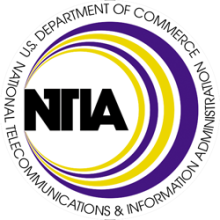Image


the term `eligible entity' means--The Senate language clearly preferred non-profit or public ownership.(A) a provider of wireless voice service, advanced wireless broadband service, basic broadband service, or advanced broadband service, including a satellite carrier that provides any such service; (B) a State or unit of local government, or agency or instrumentality thereof, that is or intends to be a provider of any such service; and (C) any other entity, including construction companies, tower companies, backhaul companies, or other service providers, that the NTIA authorizes by rule to participate in the programs under this section, if such other entity is required to provide access to the supported infrastructure on a neutral, reasonable basis to maximize use;
To be eligible for a grant under the program an applicant shall—The final language, adopted by the Conference Committee and passed by both houses in February was a compromise. It favored a public or non-profit corporation but allowed a private company to be eligible only if the Assistant Secretary of the Department of Commerce found that to be in the public interest. In the final law an eligible entity could be:(A) be a State or political subdivision thereof, a nonprofit foundation, corporation, institution or association, Indian tribe, Native Hawaiian organization, or other non-governmental entity in partnership with a State or political subdivision thereof, Indian tribe, or Native Hawaiian organization if the Assistant Secretary determines the partnership consistent with the purposes this section
(A) a State or political subdivision thereof, the District of Columbia, a territory or possession of the United States, an Indian tribe (as defined in section 4 of the Indian Self-Determination and Education Assistance Act (25 U.S.C. 450(b)) or native Hawaiian organization; (B) a nonprofit—(i) foundation, (ii) corporation, (iii) institution, or (iv) association; or(C) any other entity, including a broadband service or infrastructure provider, that the Assistant Secretary finds by rule to be in the public interest. In establishing such rule, the Assistant Secretary shall to the extent practicable promote the purposes of this section in a technologically neutral manner ;(Section 6001(e)(1))
In 2008, AT&T used 70 percent of their free cash flow on dividends to shareholders. AT&T is currently “the highest dividend yielding DOW company.” Verizon is not far behind. Furthermore, the four largest broadband providers all increased their dividends since the economic crisis began. In other words, despite soaring revenues and high demand, providers are spending large sums on shareholders, rather than investments that benefit both shareholders and customers in the long-term.For a more humorous take on how these companies fail the public, I recommend "AT&T Is A Big, Steaming Heap Of Failure." Offering public money to these companies is not in the public interest.
